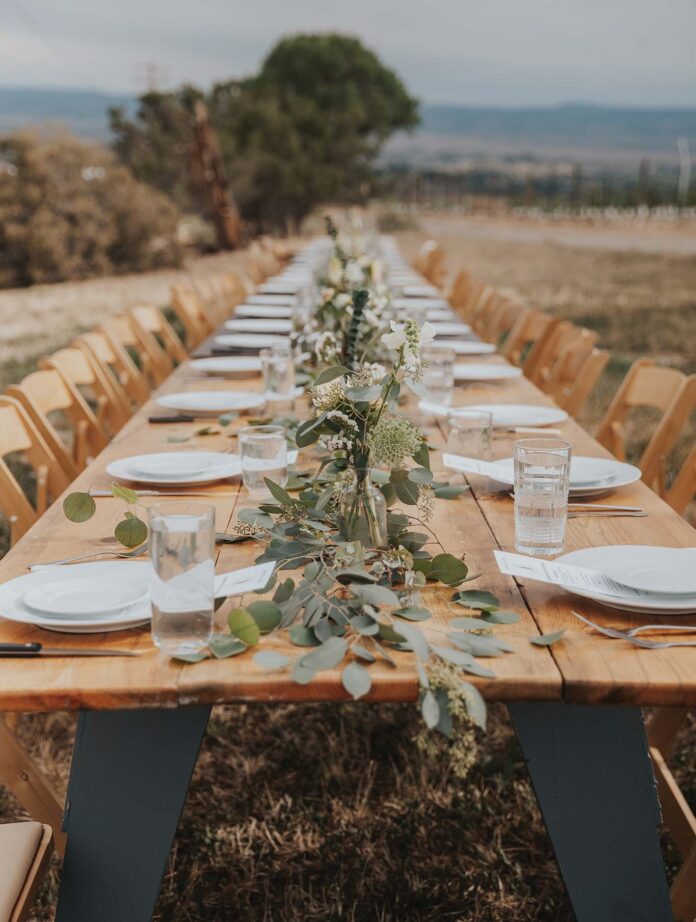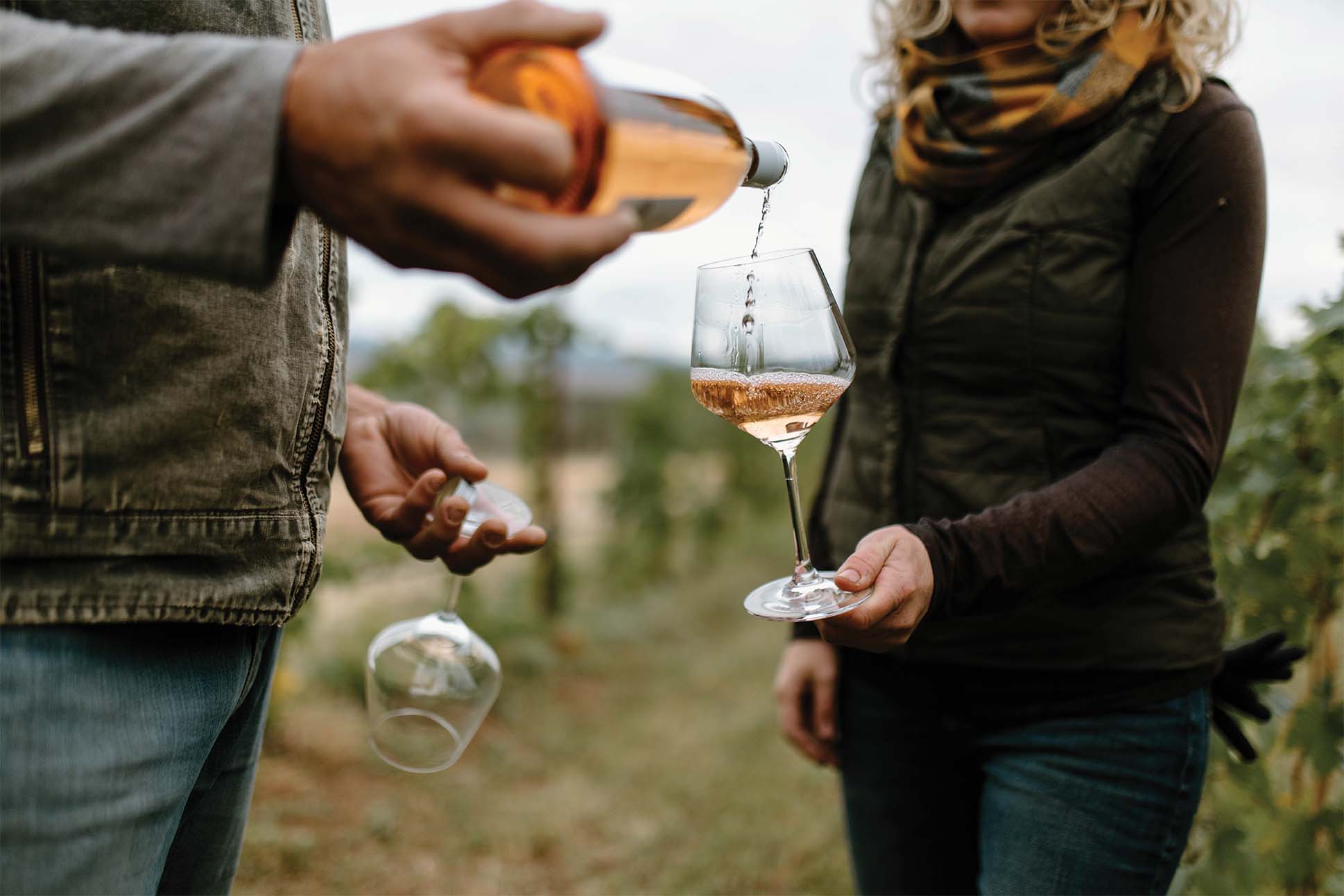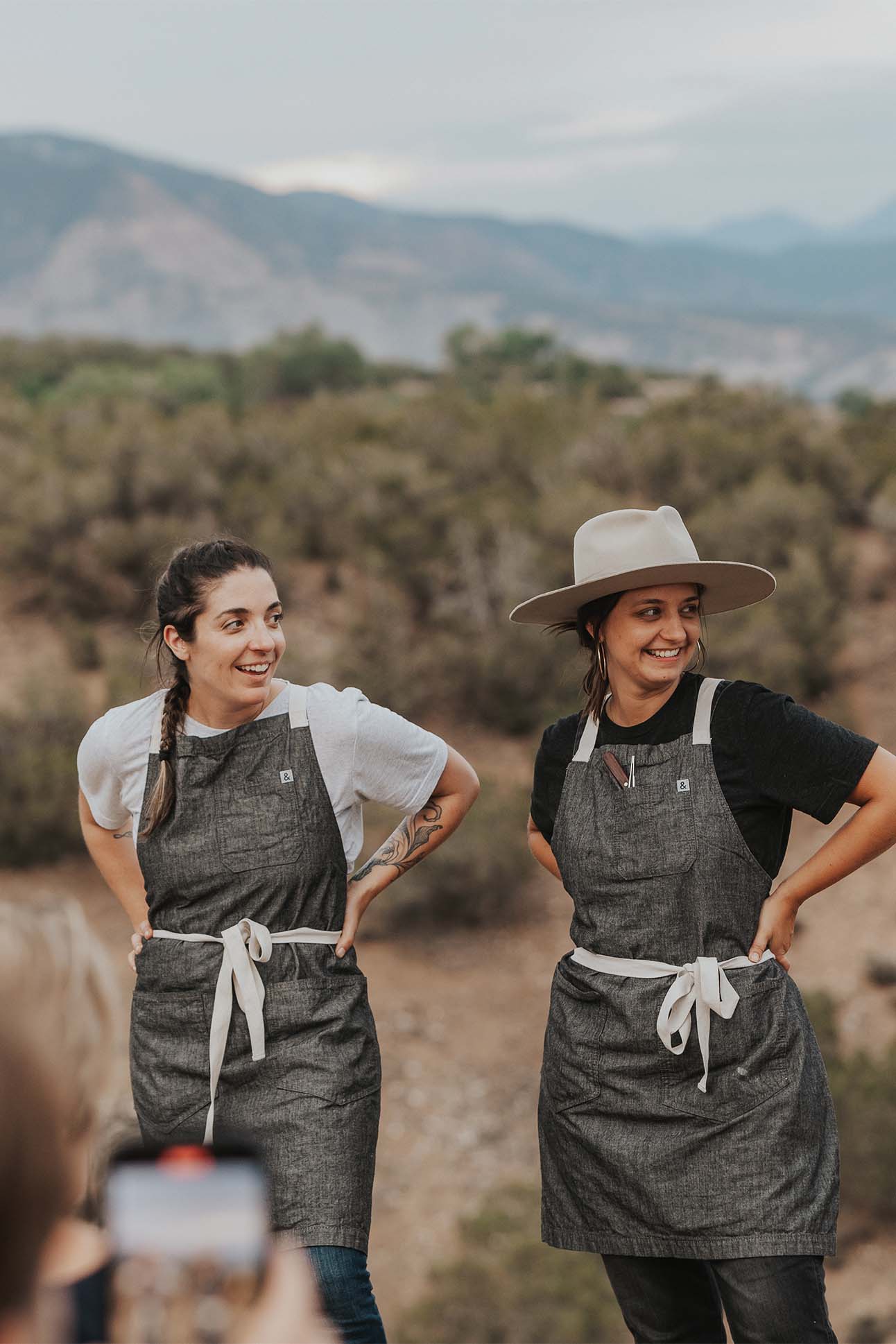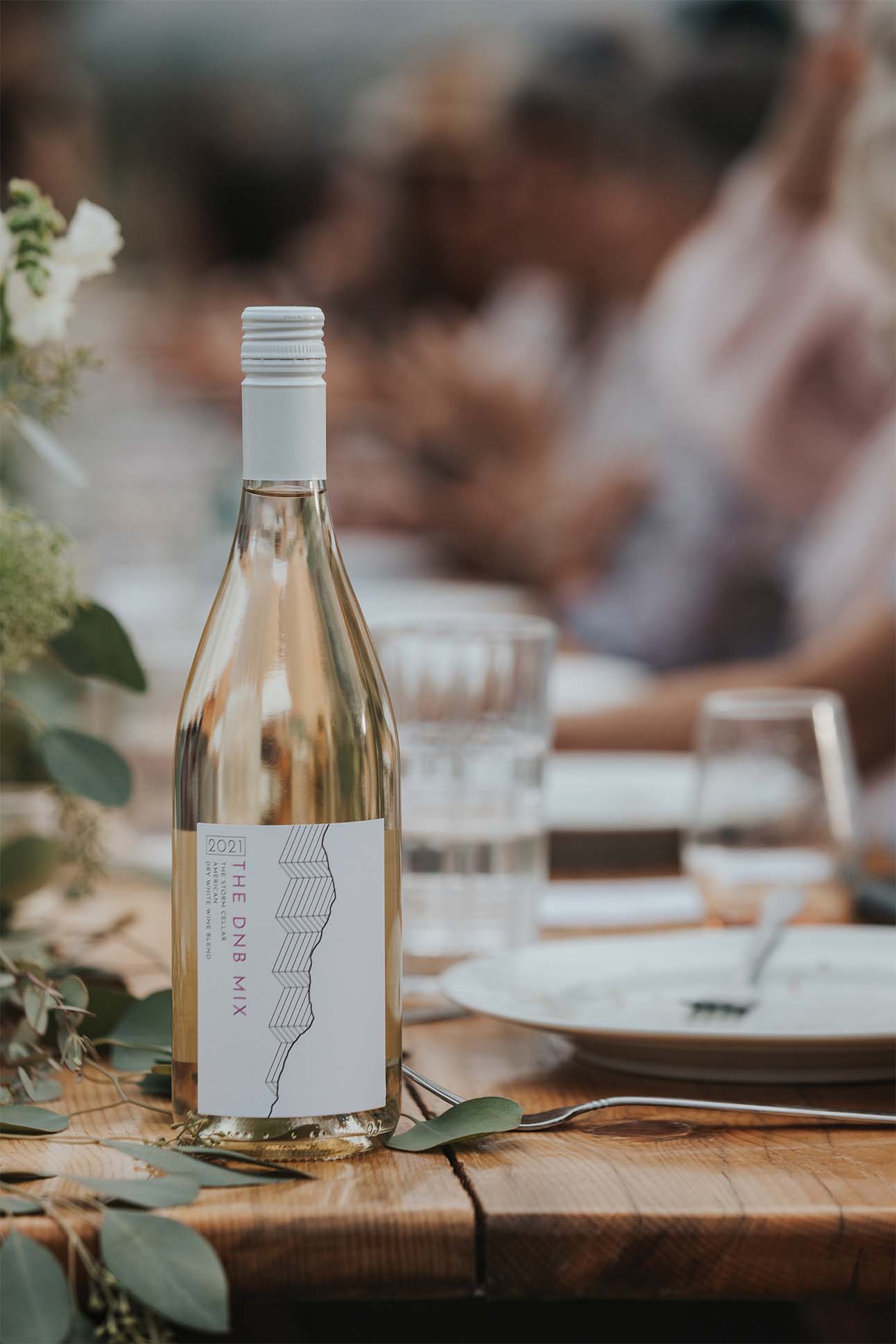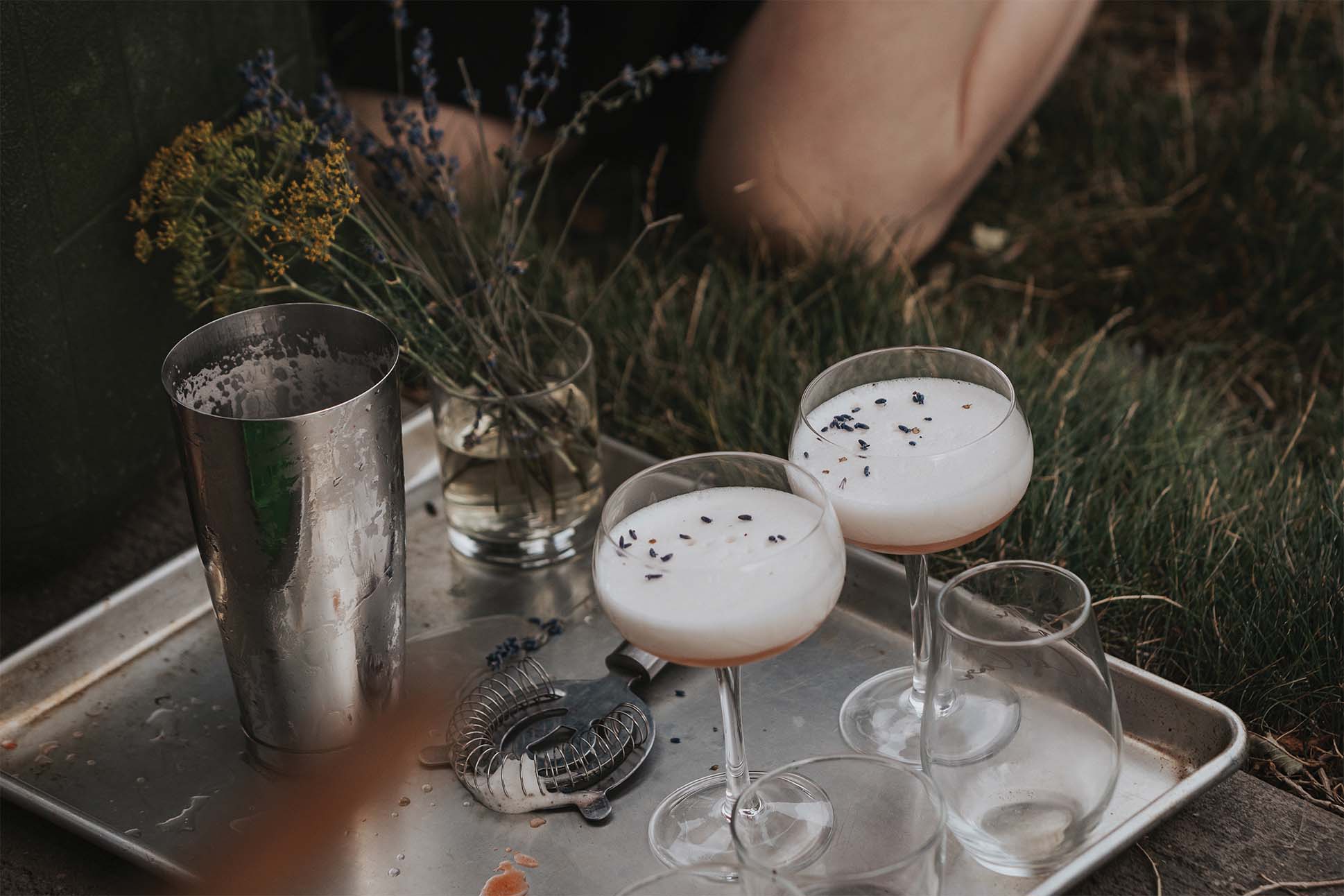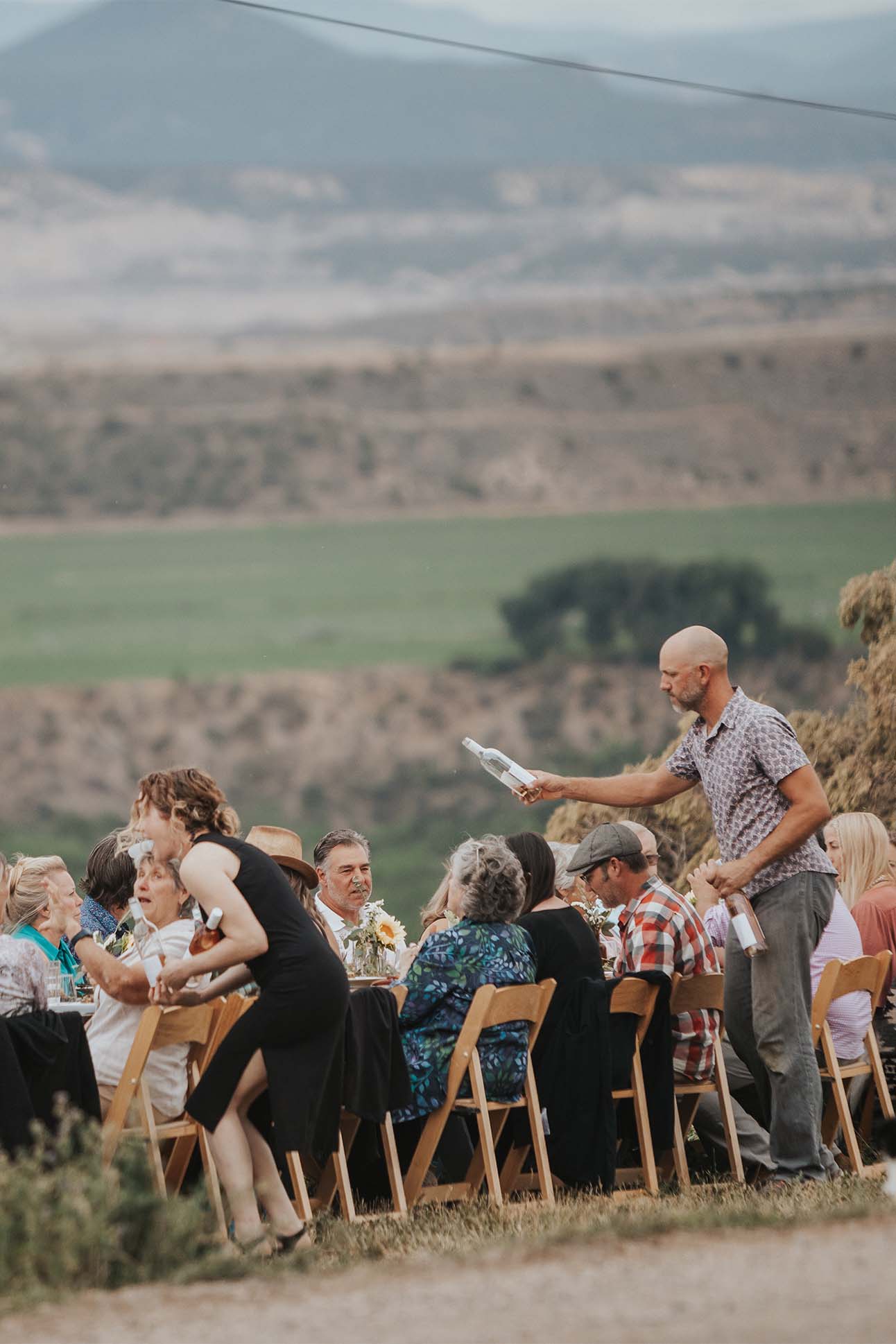Text by Carey Jones
Images by Irene Durante, Skyler Lahood, and Olive & West Photography
It was a simple question, posed by a colleague in 2016, that changed the life trajectory of Denver-area wine professionals Jayme Henderson and Steve Steese, the husband-and-wife couple behind The Storm Cellar, named Colorado’s Winery of the Year in 2022 by the Colorado Association for Viticulture and Enology. “We’re at a dinner with a bunch of sommeliers, and someone in the California wine industry asked us, ‘What’s happening in Colorado wine?’” Henderson recalls. “And, embarrassingly, we didn’t have an answer.”
Research ensued, sparking a passion and a swift career shift. “Ten months later,” she says from their property in Hotchkiss, overlooking the farmlands of the North Fork Valley, “we’d closed on this place and were out here pruning vines.”
Once they’d gotten a taste of the unpredictable, pioneering, relentlessly experimental Colorado wine world, they were hooked, and The Storm Cellar was born. “There’s an energy in Colorado winemaking that’s palpable,” Henderson says. “It’s exciting to be a part of.”
Many of the world’s great wine regions are mountainous. But Colorado, as ever, is extreme. Growing vines on gentle 1,000-foot slopes in Napa’s Mayacamas mountain range, terraced vineyards at 2,000 feet in Alto Adige, or even the perilous inclines of Germany’s Mosel simply doesn’t compare to farming at more than a mile above sea level. “Our vineyard is at about 6,000 feet,” Steese says, “which, in the Northern Hemisphere, is absolutely uncharted territory. The only other place in the world growing at that elevation is Mendoza in Argentina.”
Within five years of venturing into the Wild West of wine, Jayme Henderson and Steve Steese of The Storm Cellar claimed the award for Colorado winery of the year.
Usual methods of growing, harvesting, and even fermenting do not apply, Steese says: “Nothing is textbook.” Such singular conditions force Colorado winemakers to be adaptable. The defining philosophy is bold, experimental, and open-minded. “People are embracing a Wild West mentality,” Henderson says, whether that means different wine barrel styles, different pét-nat and sparkling wine styles, or little-known hybrid grapes.
When Henderson and Steese first visited the vineyard property that would become The Storm Cellar, it was in a state of decline, with prolific vines but long-neglected infrastructure, no winemaking equipment, and no tasting room. “We did not buy a winery,” Steese says. “We bought a farm.”
But the captivating views immediately drew them in. Situated on the mesa perched 500 feet above the North Fork Valley floor, looking past that valley to the 12,000-foot peaks of the West Elk Mountains, “It spoke to us,” Henderson says. “We’ve both been all over the world for winery visits and internships, but the beauty and majesty of this place is just unparalleled.”
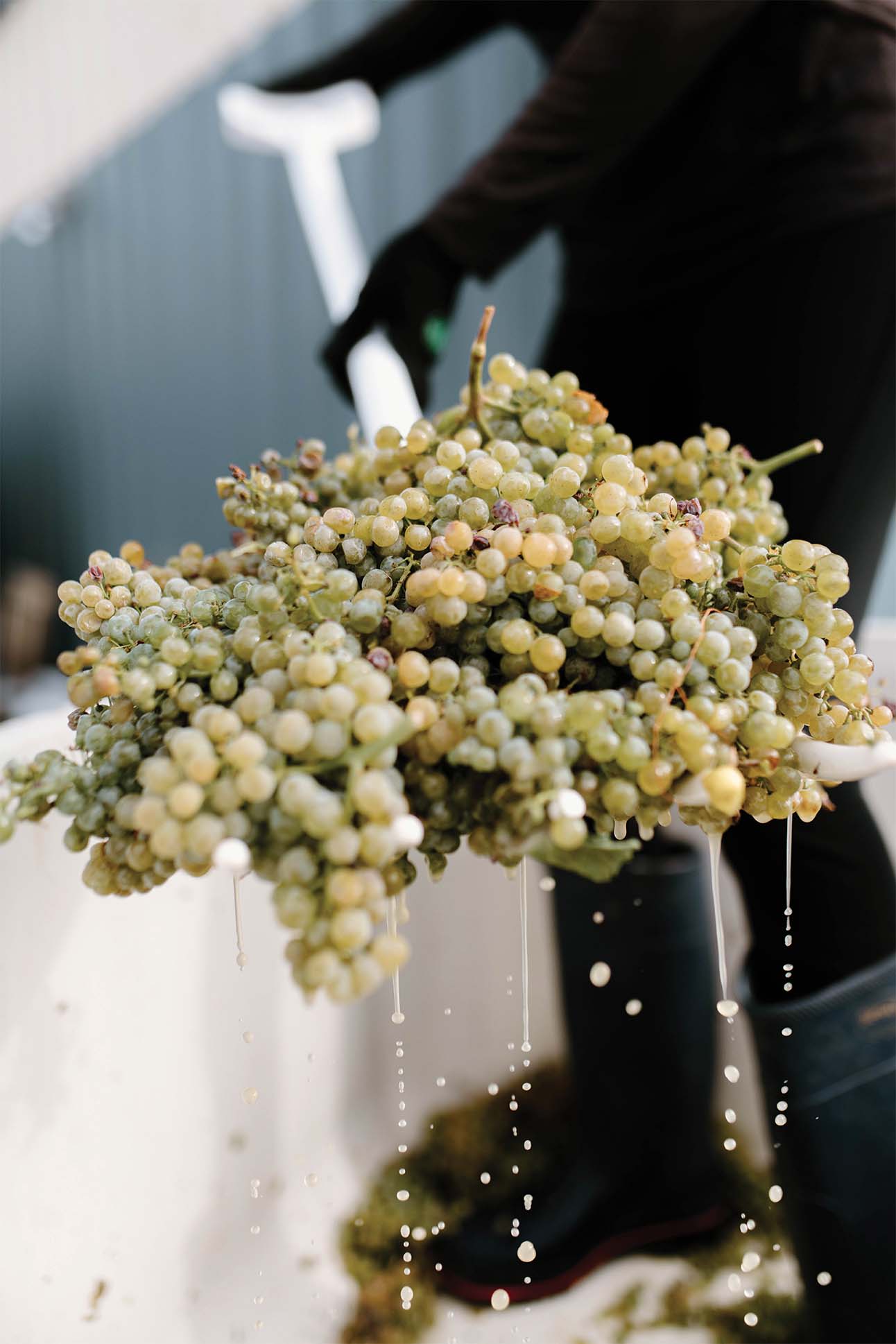
Focusing on white and rosé wines, their style is bold in acidity and lively on the palate, embracing the complexity of Colorado-grown grapes. “Our goal from day one has been to make world-class wines in Colorado,” Steese says, “to see what Colorado really can do.”
Already tasked with building a winery and tasting room from the ground up, however, Henderson and Steese were dismayed to find that many of their vines were unviable. It was thought that the notorious pest Phylloxera, responsible for decimating the 19th-century French wine industry and a scourge on vineyards to this day, couldn’t survive in Colorado’s climate, Steese explains, “and as a result, almost all of Colorado’s vineyards are planted on ungrafted rootstock, making them susceptible to that pest.” The theory was disproved just as they closed on the property, appearing in Colorado and soon in their own vines, requiring them to replant everything but a section of Riesling.
Even by Colorado wine standards, The Storm Cellar’s vineyard is quite high in elevation. In an alpine desert climate Steese calls “fringe,” everything comes in extremes. Frosts arrive as late as Memorial Day and as early as mid-October, leaving a short growing season. UV light is more intense at elevation, yielding grapes with thicker, more protective skins. (It’s one reason that The Storm Cellar focuses on whites and rosés—little or no skin contact.)
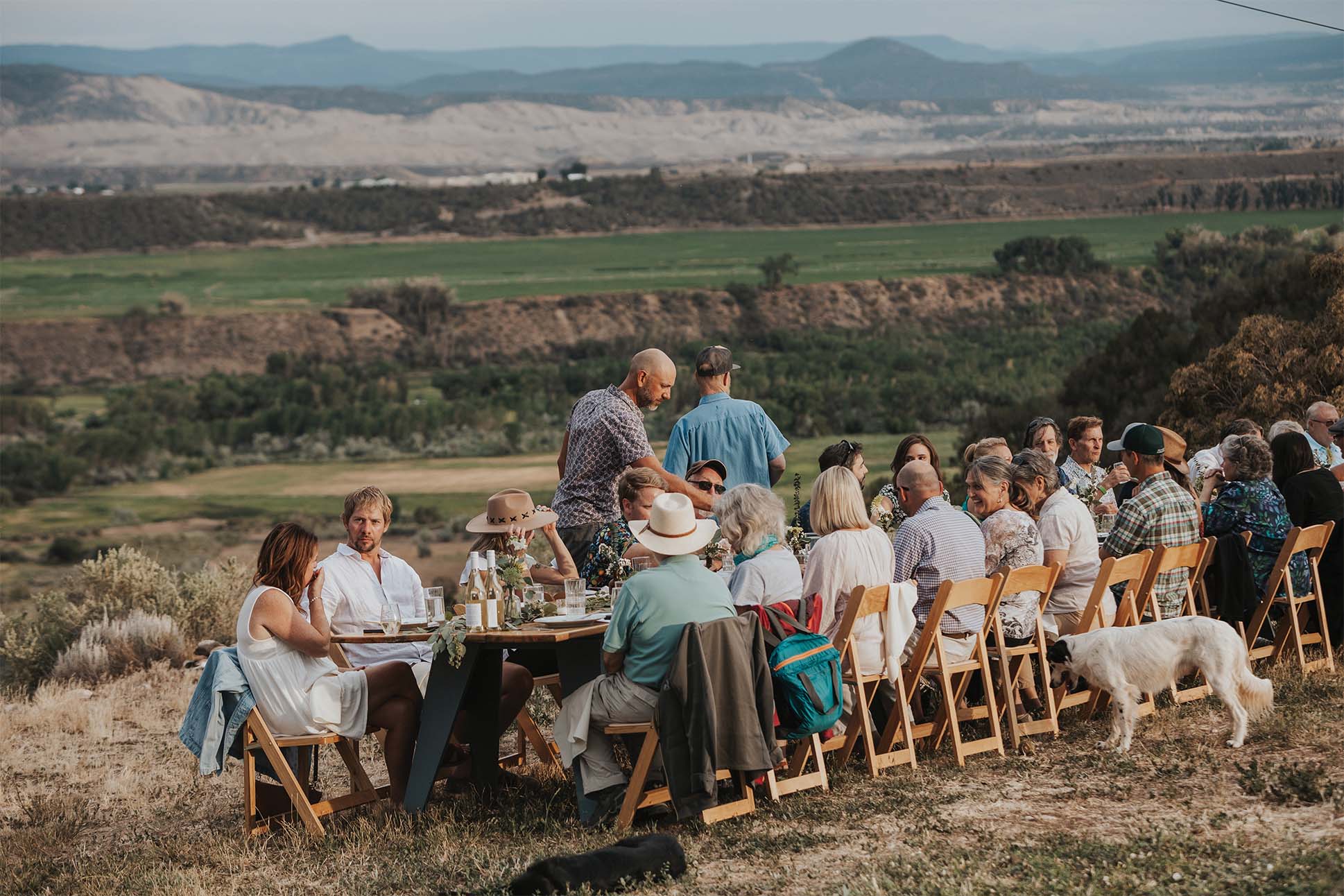
Yet everything, from the high sun exposure to the steep vineyard slopes to the dry winds, contributes to the success of the resulting wines. “The desert is actually a great place to grow wine,” Steese ventures, “as long as you can get water there.” California wine friends ask what they’re doing to stress their vines; do they dry-farm? “Everything stresses the vines here,” he laughs. “We don’t have to try.”
Grapes thriving in Colorado’s two AVAs include marsanne, roussanne, and viognier; Steese has high hopes for albariño, considering “varieties that thrive in parts of Spain or the southern Rhône Valley, specifically, really find a place in Colorado.” They also work with cold-hardy hybrids such as Itasca, “touted as the game-changing white hybrid variety,” tolerant of temperatures as low as 35 degrees below zero. “So even in the worst possible year,” he says. “we’ll get something.”
In the bottle
On The Storm Cellar estate, and within its own portfolio, riesling has emerged as the flagship variety—a perennial favorite of sommeliers for its ageability, food-friendly nature, and razor-sharp acidity. But rather than presenting a ripe stone fruit note, “ours is more like an underripe peach,” Henderson says. “And we tend to get a lot of floral notes, often a chamomile note.”
It was this wine that The Little Nell’s wine director, Chris Dunaway, first chose for the list at Element 47, a particular source of pride for Henderson and Steese. “So often with winemaking, your nose is to the grindstone,” Henderson says. “Getting on a list like Element 47—those moments affirm that you’re doing something right.”
Even in their new roles as vintners, Henderson and Steese operate with a sommelier’s mindset. Wines are made with a focus on how they’ll be served at the table, specifically in the context of fine dining. “As sommeliers, we know the impact of that moment when a great wine is experienced in an amazing situation, with amazing food,” Steese says. They’re also attuned to the care with which their wine is treated and described to customers. As Henderson puts it, at top-tier accounts, “you know that your message will be translated and given a new life.”
On the Vineyard
There’s a lot happening at The Storm Cellar in 2024: the release of its first two sparkling wines—a dry sparkling riesling and a co-ferment of riesling and local organic apples—and the first harvest from its replanted estate vines. And Henderson and Steese continue to experiment to determine the varieties best suited to their estate’s unique terroir.
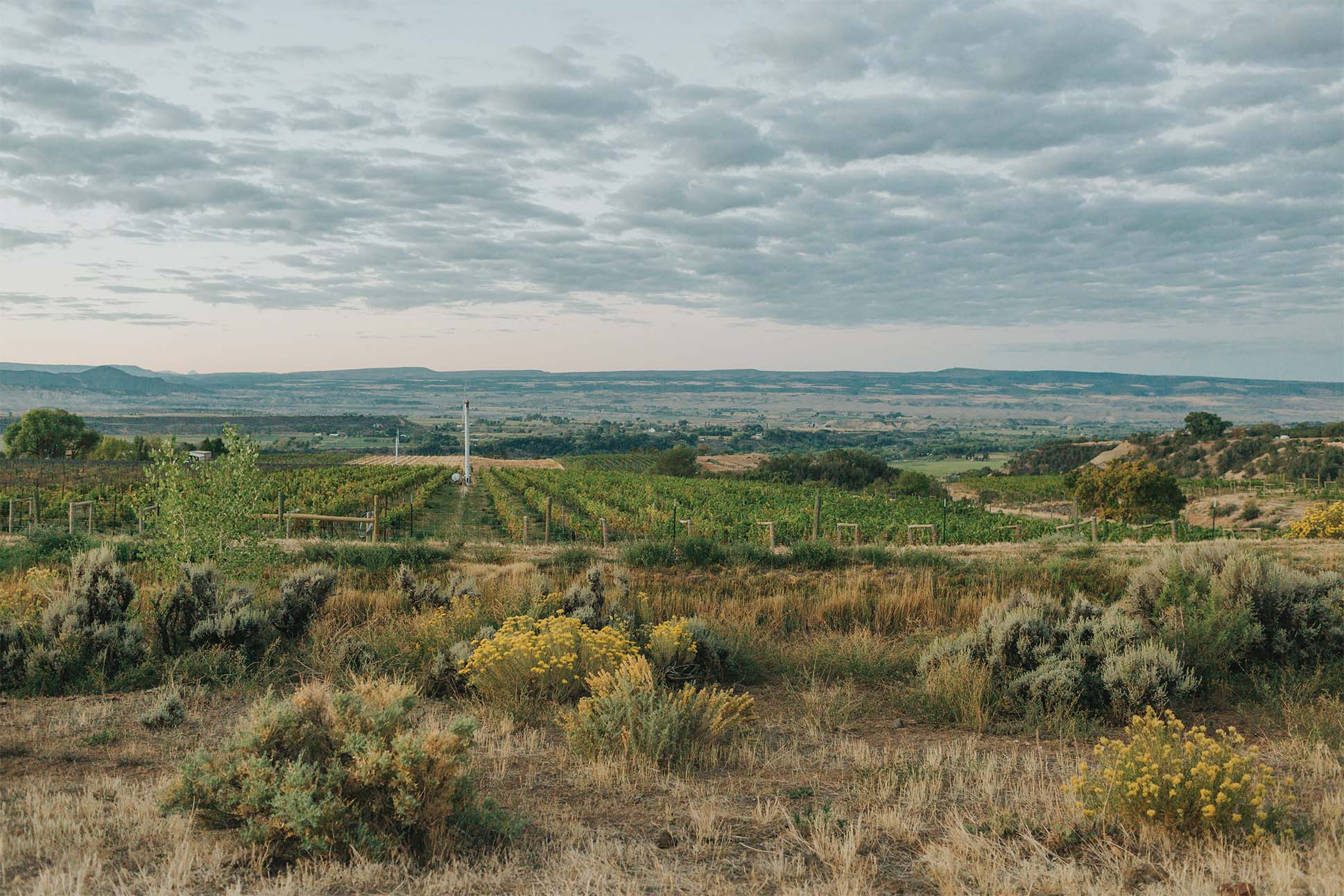
But what excites them most of all is welcoming visitors to the vineyard and tasting room—hosting summer events like Friday steak nights, wine-release parties, chef-led wine dinners, and the always-popular Asado on the Mesa, their fire-cooked communal meal series with wine pairings. Set against an unparalleled backdrop along the Western Slope, the hope is for people to discover not just The Storm Cellar vineyard, but the whole North Fork Valley.
“This valley of farms and orchards and pastures is the organic hub of the whole state,” Steese says. Henderson adds, “This amazing corner of Colorado is really gaining a sense of community. And a lot of people who come to visit Colorado want to taste what Colorado has to offer.”
The Storm Cellar will be the featured winery partner for The Little Nell’s Ride + Dine dinner on September 10. Details can be found online.

